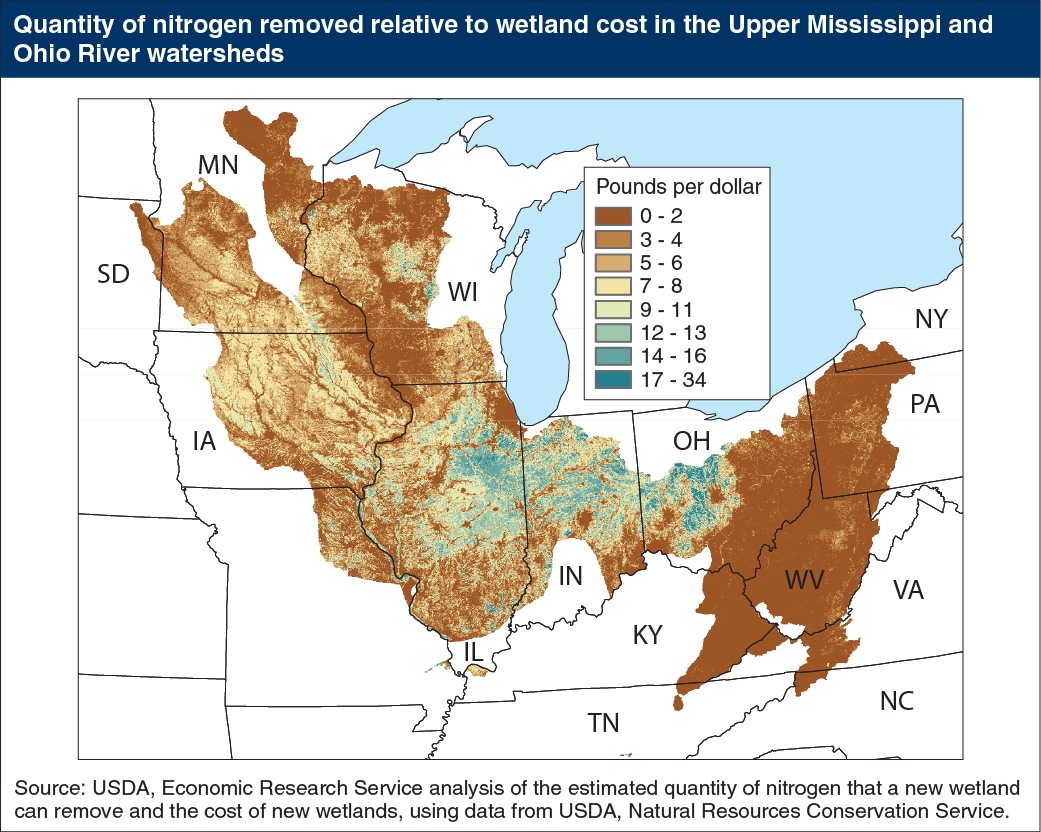Maintaining and restoring wetlands could remove nitrogen cost effectively over much of the Upper Mississippi and Ohio River watersheds
- by LeRoy Hansen
- 6/1/2015

Every year, agriculture contributes an estimated 60-80 percent of delivered nitrogen and 49-60 percent of delivered phosphorous in the Gulf of Mexico. Nitrogen in waters can cause rapid and dense growth of algae and aquatic plants, leading to degradation in water quality as found in the hypoxic zone of the Gulf of Mexico, where excess nutrients have depleted oxygen needed to support marine life. Nitrogen removal is one of the many benefits of wetlands. An ERS analysis found that on an annual basis, the amount of nitrogen removed per dollar spent to restore and preserve a new wetland ranged from 0.15 to 34 pounds within the area of study (the Upper Mississippi/Ohio River watershed), or a range of $0.03 to $7.00 per pound of nitrogen removed. Restoring and protecting wetlands in the very productive corn-producing areas of Illinois, Indiana, and Ohio tends to be more cost effective than elsewhere in the study area. The study suggests that if nitrogen reduction was the only environmental goal, these corn-producing areas would be a good place to restore wetlands. Hydrologic conditions in the Upper Mississippi and Ohio River watersheds are unique, so the cost effectiveness of wetlands elsewhere is uncertain. This map is found in the ERS report, Targeting Investments To Cost Effectively Restore and Protect Wetland Ecosystems: Some Economic Insights, ERR-183, February 2015.


